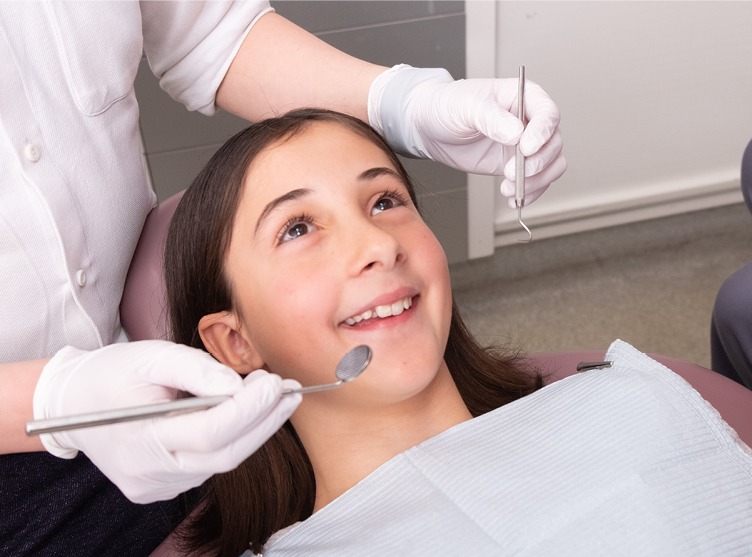Getting My Legacy Orthodontics To Work
Getting My Legacy Orthodontics To Work
Blog Article
Legacy Orthodontics Can Be Fun For Everyone
Table of ContentsLittle Known Questions About Legacy Orthodontics.Not known Details About Legacy Orthodontics Little Known Questions About Legacy Orthodontics.The Facts About Legacy Orthodontics RevealedExcitement About Legacy Orthodontics
At Advanced Orthodontics, we provide individuals with a all natural treatment experience. In addition, we provide flexible therapy timetables, flexible repayment choices and a fun, satisfying experience. orthodontics. Telephone call ( 480) 357-4900 today for more details and routine a consultation.An orthodontist is a dental expert educated to diagnose, prevent, and deal with teeth and jaw abnormalities. They deal with existing problems and are trained to determine troubles that might establish in the future. Orthodontists deal with people of all ages, from kids to grownups. People frequently connect a best smile with excellent health and wellness.
Malocclusion, or misaligned teeth, can bring about oral problems, including tooth degeneration, periodontal disease, and hard or excruciating chewing. Not everyone is birthed with straight teeth. If you have a poor bite or big areas in between your teeth, you may intend to consult a dentist focusing on orthodontic treatment.
Legacy Orthodontics Things To Know Before You Get This
( Picture Credit Score: DigitalVision/Getty Images) Orthodontists use repaired and removable oral devices, like braces, retainers, and bands, to transform the position of teeth in your mouth. Orthodontic therapy is for oral irregularities, including: Misaligned teethBite troubles, like an overbite or an underbiteCrowded teeth or teeth that are as well much apartJaw misalignmentThe objective of orthodontic treatment is to improve your bite.
A healthy bite guarantees you can consume, eat, and talk appropriately. While you may think about orthodontists as mostly for kids or teenagers that require dental braces, they can correct dental problems at any age. Orthodontists attend college, dental institution, and orthodontic institution. After graduation, they invest 2 or 3 years in an orthodontic residency program.
All orthodontists are dental professionals, however not all dental professionals are orthodontists. Orthodontic residency programs supply intensive, focused instruction for oral specialists. They concentrate on two areas: Just how to properly and safely move teeth Just how to properly direct development in the teeth, jaw, and faceOnce an orthodontist has finished training, they have the alternative to come to be board accredited.
Everything about Legacy Orthodontics
Malocclusion leads to tooth overcrowding, an askew jaw, or irregular bite patterns. Malocclusion is typically treated with: Your orthodontist attaches steel, ceramic, or plastic square bonds to your teeth.
If you have just small malocclusion, you may be able to use clear dental braces, called aligners, as opposed to standard dental braces (https://lnk.pblc.app/pub/b0e5d1a6702fd3). Some people need a headwear to help move teeth into line with stress from outside the mouth. After braces or aligners, you'll require to put on a retainer. A retainer is a custom device that maintains your teeth in position.
They can develop extra area in the mouth without having to pull teeth. Orthodontists make use of cables, surgical screws, or plates to sustain your jaw bone.
You may need to see an orthodontist if you have: Crowding or not enough space for every one of your teethOverbite, when your upper teeth come your bottom teethUnderbite, when your bottom teeth are too far forwardSpacing or problems with gapsCrossbite, which is when your upper teeth fit behind your base teeth when your mouth is closedOpen bite or an upright void in between your front bottom and upper teethMisplaced midline, when the center of your bottom and upper teeth don't line up Remedying an oral malocclusion can: Make attacking, chewing, and talking easierImprove the proportion of our face and your total appearanceEase pain from temporomandibular joint disordersDifferent your teeth and make them easier to clean up, assisting protect against tooth degeneration or cavities It's usually a dental practitioner who initially notifications misaligned teeth during a regular test.
The Single Strategy To Use For Legacy Orthodontics

Throughout your first orthodontic assessment, you'll likely have: An oral examPhotos taken of your face and smileDental X-raysPanoramic (360 degree) X-rays of your face and headImpressions to create molds of your teethThese tests will assist your orthodontist understand just how to wage your therapy. leesburg invisalign. An orthodontist is a dentist who's had training to treat your teeth and jaw
Orthodontists may carry out surgical treatment, exams,X-rays,and more to assist you acquire a much more comfortable, healthier smile. An orthodontist is focused on your bite, so something like a cracked tooth would certainly be handled by a dental practitioner. Orthodontists are dental experts however not all dentists are orthodontists. Orthodontists are concentrated on your bite, or the way your teeth fit together, and the straightness of your teeth.
Ever wondered how celebs constantly seem to have perfectly straightened teeth? Orthodontists are dental professionals that focus on fixing irregularities in the teeth and jaws.
The smart Trick of Legacy Orthodontics That Nobody is Talking About

, orthodontists have a diverse toolkit at their disposal. These tried-and-true dental braces make use of a system of brackets bound to the teeth and attached by cords.
Clear aligners, like Invisalign, are a prominent alternative for patients seeking an extra discreet treatment choice. These detachable trays are tailor-made to gradually change the teeth's placement. Headgear might be used together with braces or aligners to apply additional targeted forces, specifically for dealing with jaw discrepancies. In cases of narrow jaws, palatal expanders can be utilized to create area for correct tooth positioning.
Report this page